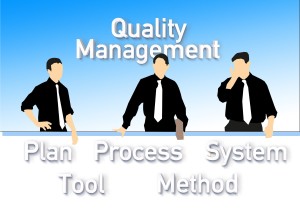To remain competitive, continuous improvement is necessary in all areas of a company. Too often, focus is kept on product development and customer service, and Supplier Quality Management is neglected after suppliers have been chosen. However, it is important to recognize the necessity of maintaining consistent standards of quality in all of the company’s current products. This begins with ensuring that the materials provided by chosen suppliers meet the product requirements, which must be constantly checked, and ensuring that the right suppliers are chosen to lessen the need for perpetual monitoring. But once you have chosen the suppliers, how do you know if they are the right partners?
- Improve Communications.
Mistakes born out of miscommunication are simple and easily avoidable, but they can create a wide range of potential issues if not addressed appropriately. Whatever the size of the issue, preventing these mistakes from the beginning can save both time and effort. It is important to ensure that the correct message is being conveyed to the recipient. To reduce the risk of error, the company must invest in communication systems that allow messages to be sent and received in real time, ensuring that the sender and the recipient have the same level of understanding.
- Optimize the Use of the Cloud.
Innovation continues to revolutionize the way companies do business in the modern world. We no longer have to rely on stockrooms of filing cabinets and mountains of paper. While hardcopies still have their relevance today, we are no longer dependent upon them, thanks to the technology of electronic storage and, most recently, the Cloud.
Sensitive information can now be stored privately and securely in the Cloud, reducing the risk of losing critical information to accidents like natural disasters or the misplacement of hardcopies. The Cloud can protect documents from corporate theft, and it can keep the personal information of employees private. To supplement the secure technology of the Cloud, it is essential that the company hire IT professionals to initiate firewalls and document encryption. IT professionals will maintain the IT infrastructure and safeguard it against hackers and other cybercriminals.
- Assess the Quality.
To efficiently and effectively assess the quality of the company’s supplies, randomly select a certain number of each type of material from every supplier. Compare the quality of each one to the quality standards that were agreed upon. How did each item fare? Has the vendor continued to deliver the kind of goods that are necessary for creating quality products? If you have not specified product requirements, you cannot find fault in the supplier for not meeting expectations when expectations were not clearly set, and it is time to start compiling a list.
- Assess the Risk Associated With Your Suppliers
So you’ve already done the research on your suppliers. You’ve researched the supplier’s background and any possible accusations of legal violations and scandals. The supplier has met your initial criteria. Have you kept an eye on the news regarding the company since then? Does it have a business continuity program? If so, what are the details involved, including costs of expansion, and how will it impact your business? Has the program been implemented?
Continue to reassess the supplier’s performance against its own set of values and against your company’s set of values. Anything that affects your suppliers could affect your company as well. Be careful about whom you choose to associate your company with. The person or establishment should match or complement the branding, positioning, and values of your company.
- Expand the List of Alternative Suppliers
The most well-known suppliers in the field have gained their reputations for a reason, but it is important to keep an eye on new potential players as well. These suppliers could bring in new processes, better products, and improved services compared to the old competitors. They should be researched, observed, and taken into consideration.
Review online directories, advertisements, and write-ups in business magazines. There are also expos and conferences where you can meet these new suppliers and build connections with them. Every supplier carries its own set of risks, and there are risks unique to new suppliers. Subscribe to regular journals about operations. Read business blogs. Review processes, equipment, and protocols. Always look for ways to improve your systems. The key to continuous improvement is in its continuity. As companies continue to enhance their operations to compete in business, there will always be new developments.
This list outlines only a few of the practices that your company should be regularly observing. There might be practices that are unique to your field, to your internal processes, or to your organization. Always look for lapses and gaps that can be covered. There will always be ways that you can improve Supplier Quality Management in your company.

